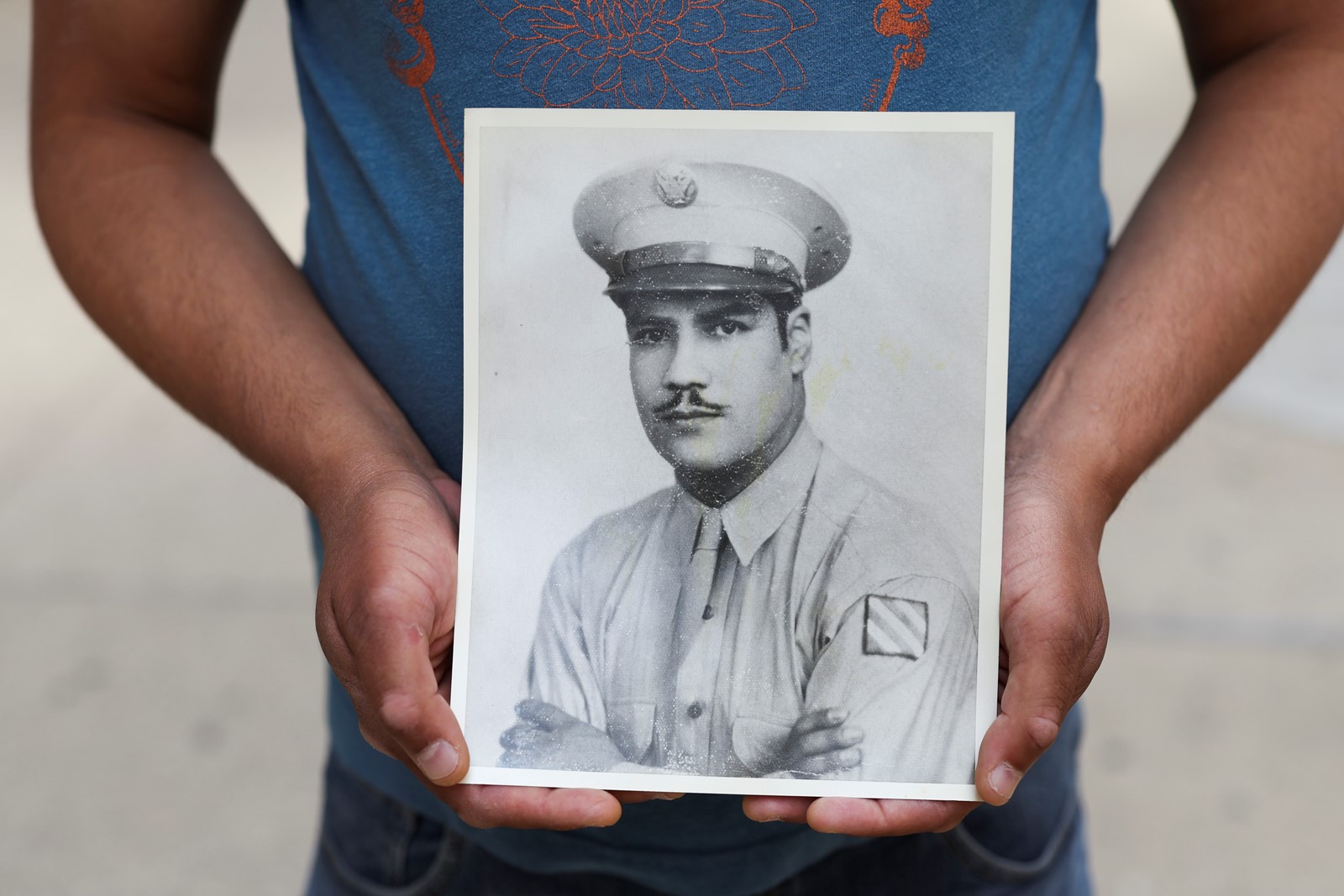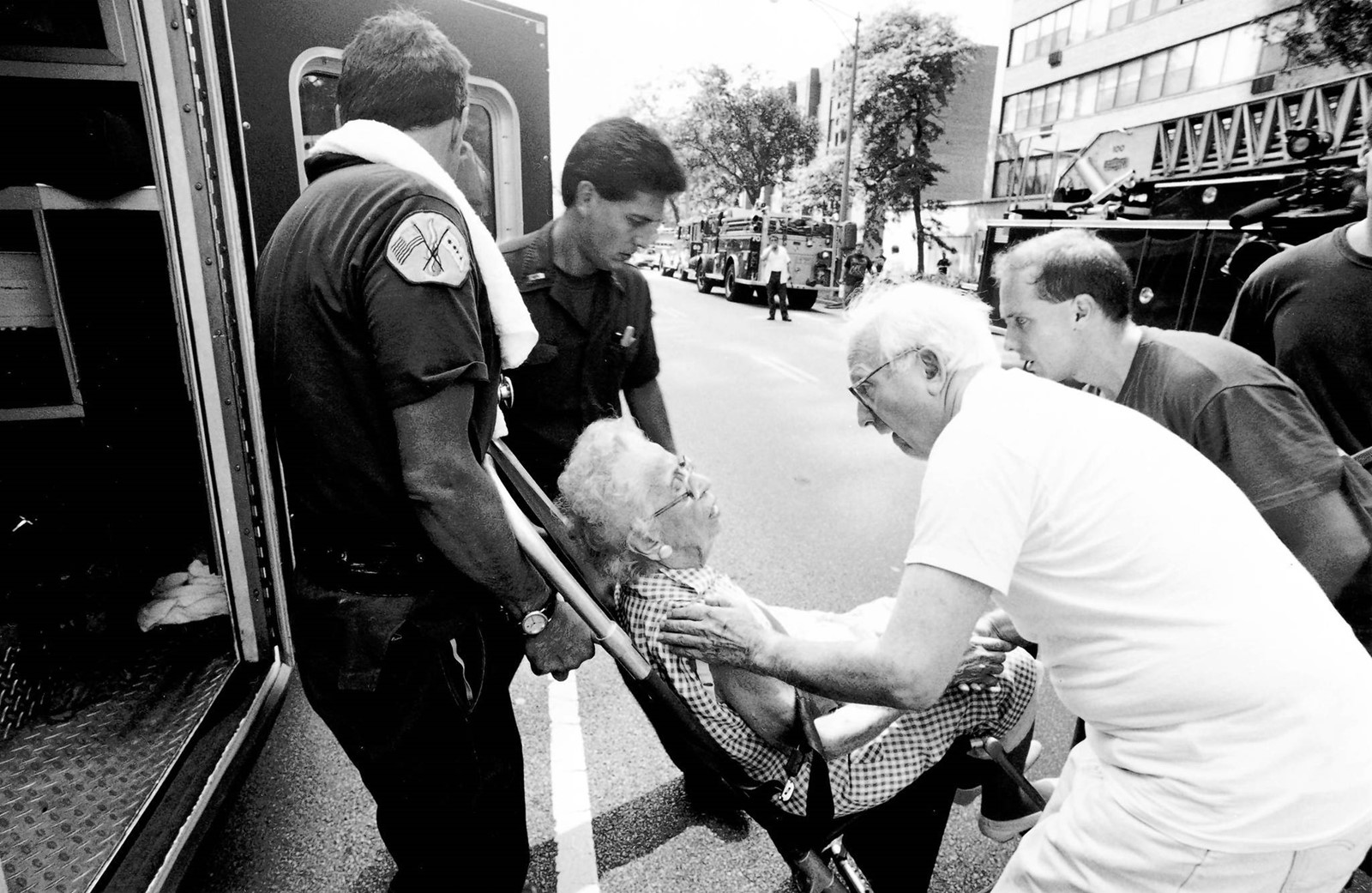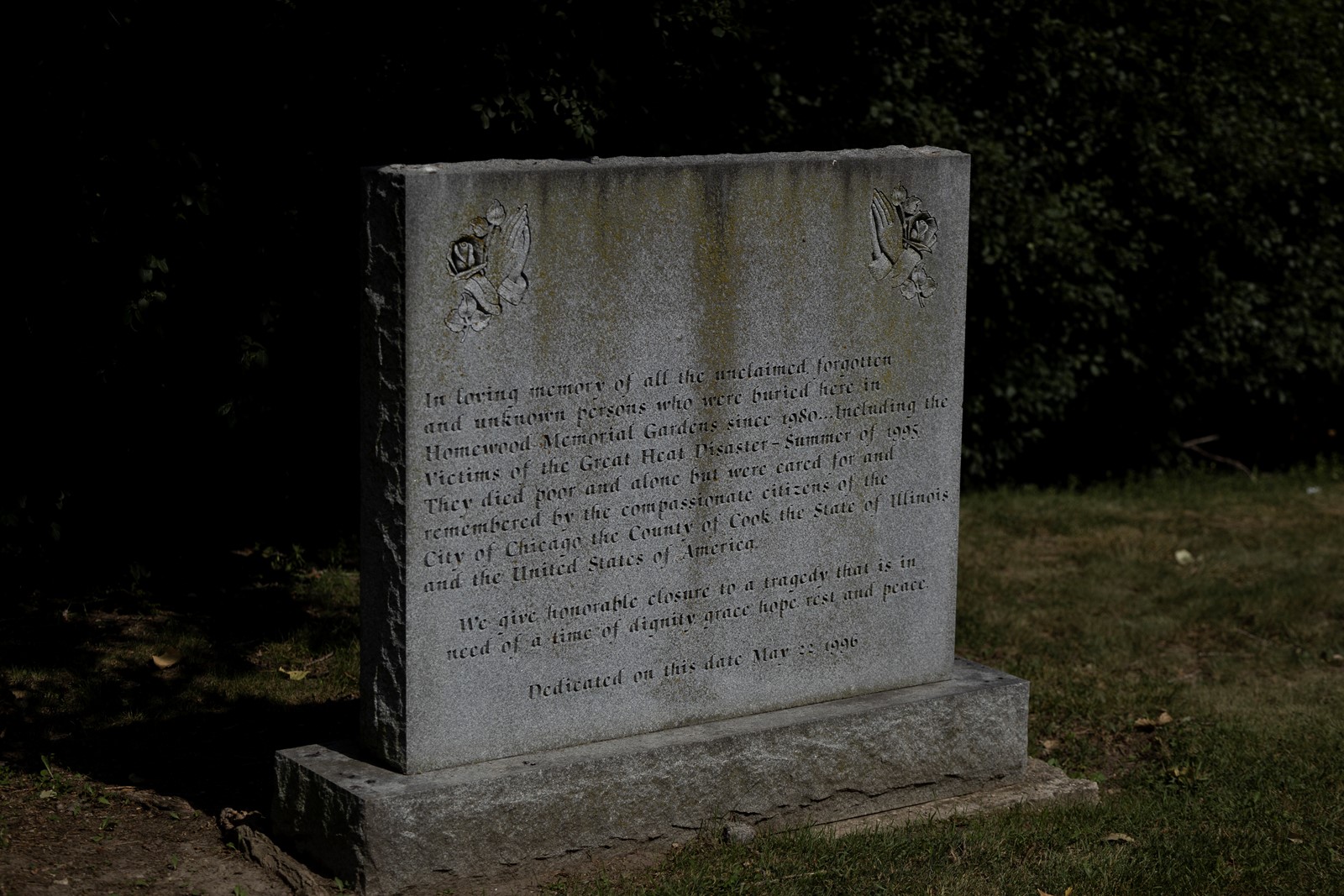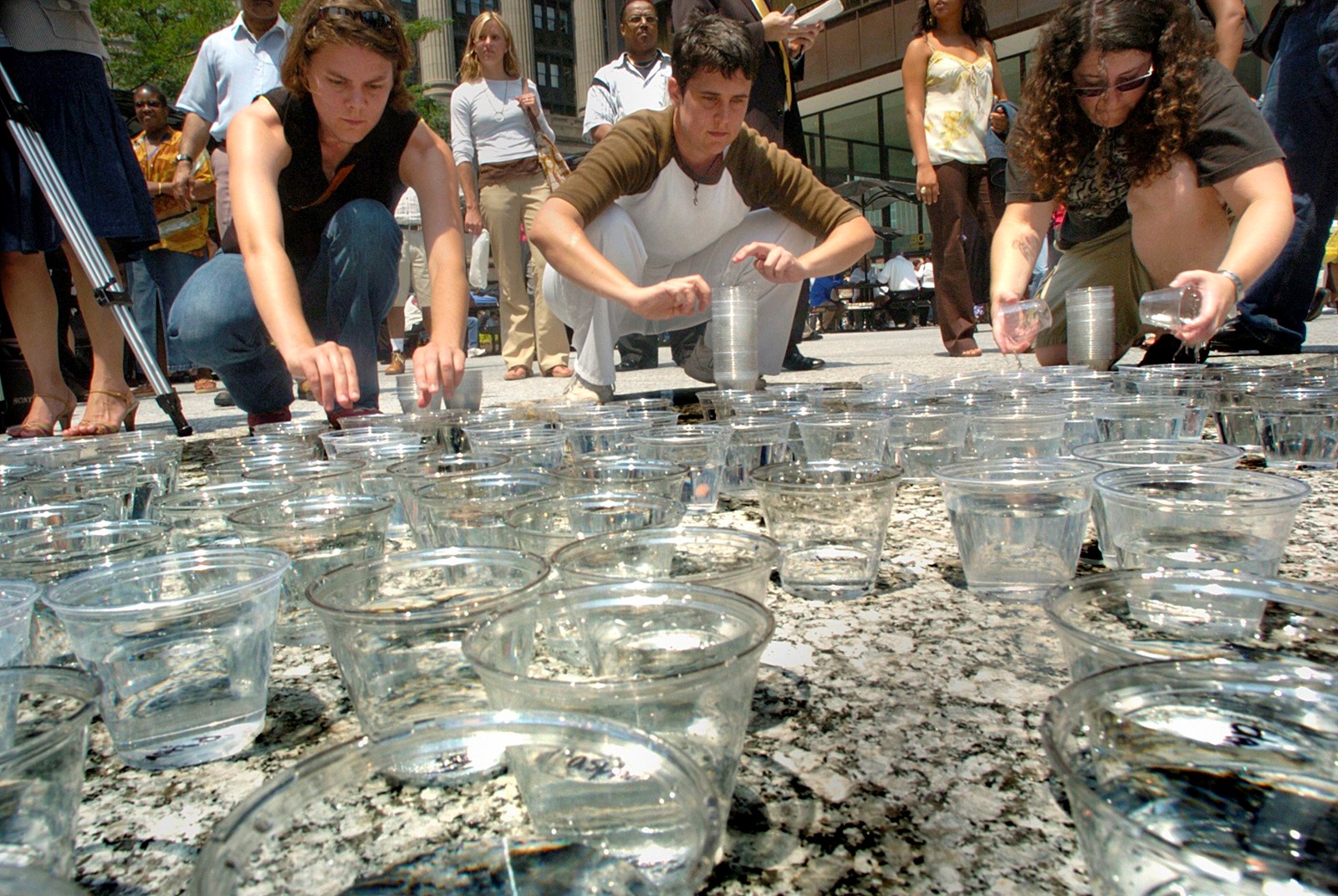



Emilio Aguirre died July 17, 1995.
He died because he was too hot.
He received a headstone in the back of Homewood Memorial Gardens cemetery just last month. We know very little about Emilio Aguirre. We know that he was 80 when he died. We know that he had a wife who died long before he did and we know they had a child, but we don’t know anything beyond that fact. We know that he had siblings, but the last of them died in 1969.
We know Aguirre spent decades alone, in an apartment on the North Side. We know that he was poor when he died, so poor the city of Chicago buried him in Homewood Memorial because that’s where Cook County keeps a longstanding agreement to bury unclaimed, forgotten or unknown residents of the city.
Aguirre was buried in a long plot that holds 41 other Chicagoans who died the same week that he died, and for the same reason: It was way too hot in July 1995. The site is what some people would call a potter’s field, and others would refer to as a mass grave.
There’s no nice way to put it.
The headstone is small, the lettering gold, and gives additional, not minor details: Aguirre served in the military during World War II, he was a prisoner of war, he received a bronze star.
Charles Henderson, a Chicago veterans activist who served in Afghanistan, is the reason Aguirre received a headstone 30 years later. He saw a flash of Aguirre’s veteran’s papers in “Cooked,” a 2019 documentary about the Chicago heat wave of 1995. It took years of paperwork and research, but Henderson eventually learned that Aguirre, a native of Mexico City, crossed into the United States at 13, and despite his immigration status, served in the U.S. Army before becoming a U.S. citizen.
At the bottom of his headstone, it says: “NEVER FORGOTTEN.”
But that’s more polite than true: Like many of the 739 Chicagoans who died of heat that summer, many elderly, many people of color, he was forgotten for years. His grave is one of two places in the Chicago area where you are even reminded of what happened.
The closest thing we have to a true memorial is not even in Chicago. It’s the headstone of the mass grave in Homewood, a short walk from Emilio Aguirre’s new marker. It’s about 5-feet tall and sits at the back of a plot that abuts a parking lot for trucks and trailers. It’s thoughtful, but unless you know it’s there, you’d never know it’s there.
And while it means well, it avoids anything like context. The inscription reads: “They died poor and alone,” then takes a contradictory turn: “But were cared for and remembered by the compassionate citizens” of Chicago, in the form of a collective headstone. That marker, installed less than a year after the heat, “gives honorable closure” to the crisis.
Inside an auction house on Western Avenue in Rogers Park are cardboard boxes. Each holds personal items, mostly papers and letters, left by 125 or so residents who died from the heat that summer and had no one to handle their burials or what remained of their estates. Their bodies were sent to Homewood Memorial Gardens and their papers to the little-known Office of the Public Administrator of Cook County; its whole job is to manage the belongings of residents of Cook County who die without any known relations.
Some of what is in those boxes was never connected to living relatives because, well, decades ago, the department wasn’t nearly as good as it is now about tracking down relatives. What is in those boxes are many mountains of clues as to who the victims were.
Dolores Adams of Sheridan Road left her Medicaid card.
Lillian Boyer of W. 63rd Street left an insurance policy.
Jimmie Floyd of Rockwell Street left 80 cents in change.
James Grady and Edward Hoffman lived blocks apart in Mayfair and though there’s no indication in their possessions that they knew each other, they are bonded in loneliness: Hoffman left behind a returned letter in which he asked a friend to “please” visit soon, explaining that he lost his left leg and several fingers to frostbite; Grady left a letter from his mother written 25 years earlier, who explains: “There is not much more I can say,” other than she is now too old to help him, but she will always love him deeply.
Geraldine Buttersworth of W. 69th Street left a birthday card from a sibling, who boasted, from her home in Iowa, that she had central air, and even signed the card: “Hot enough for you?”
Luis Mendez left a black-and-white portrait of a woman with a bouffant and a large stack of Christmas cards from friends and relatives, many received at least 30 years earlier.
James Ordile left his Blockbuster card.
Others left wallets, some left savings books showing amounts too small to pay for groceries, never mind a funeral. There are passports and back-rent notices that would never be paid. Some folders contain Polaroids shot by investigators, showing small apartments and a fan in a corner. Jerry Van Houten of Aldine Avenue left a Post-It note apparently stuck to his front door: “Cynthia from Michigan has been trying to reach you.”
Some left lives amounting to thick folders, some to folders so thin it’s surprising there’s anything inside at all. Emilio Aguirre, the Bronze Star POW who just got his headstone, had a thicker folder, containing his wristwatch, military papers and naturalization papers.
Charles Henderson was able to get Aguirre a headstone 30 years later because Aguirre had left the paperwork. But the fact it took so long for Aguirre to receive his headstone infuriates the veterans’ rights activist.
“Someone back then could have easily seen what’s in (his folder) and called an American Legion or a VFW hall and said ‘Hey, we got this guy here…’ Cook County wouldn’t have even had to pay for a burial! Every veteran is owed that. Instead, someone just saw the possessions of a poor old Mexican guy.
“I truly believe that. Emilio didn’t have to go to World War II, he could have returned to Mexico. And he didn’t, then he died alone. But at the end of the day, it’s poor people who suffer. No one wants to talk about that. Certainly, no one wants to remember that.”
cborrelli@chicagotribune.com


 PREVIOUS ARTICLE
PREVIOUS ARTICLE
